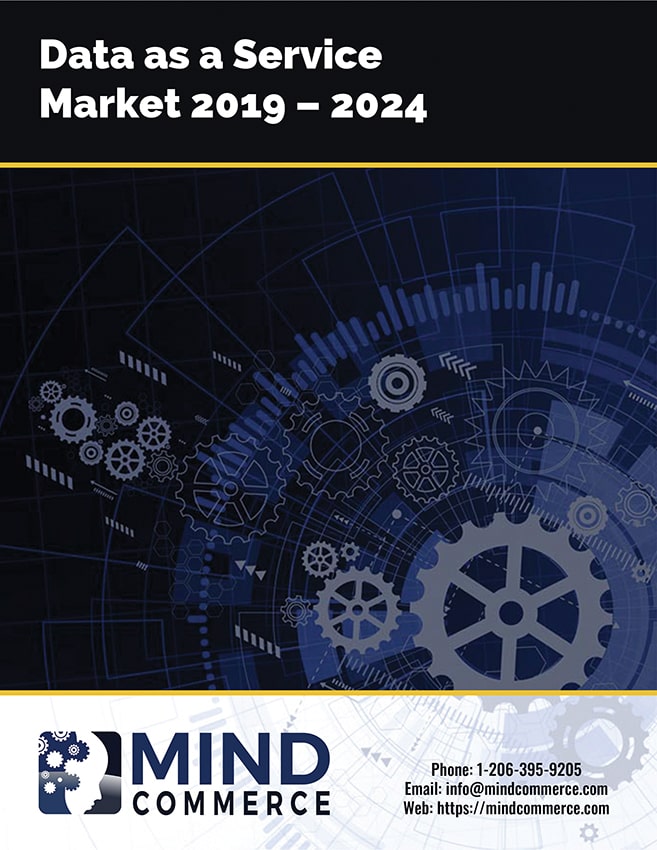Description
Data by itself is useless. Data needs to be managed and presented in a manner that is useful as information. Data as a Service (DaaS) represents a service model in which data is transformed into useful information. The Data as a Service market is one part of the larger Everything as a Service (XaaS) cloud computing based services model, including the traditional three horizontals of SaaS (Software as a Service), PaaS (Platform as a Service), and IaaS (Infrastructure as a Service). It intersects with all three and derives value from a number of different horizontals and verticals.
There is considerable competition in the market, happening at a variety of different levels, with feature highly variable between vendors. This causes confusion for the enterprise and causes them to often choose two or more providers. Barriers to enterprise adoption of the DaaS model include include security concerns, reliability, regulation, vendor lock-in/interoperability, IT management overhead, and other costs.
However, the reasons for implementing DaaS far outweigh the concerns, especially when it comes to IoT data, which must have flexible and scalable platforms for storage, processing, and distribution. Accordingly, enterprise organizations are five times more likely to implement DaaS for machine-generated IoT data than for static data located in corporate repositories or data lakes. The DaaS market must support both static and dynamic data, but the latter will benefit significantly more, especially as edge computing is implemented and real-time data is available.
Data as a Service Market Dynamics
A surprising number of enterprises, both current and prospective DaaS customers, do not realize they have options for combinations of data including (1) their own data, (2) other companies’ data, (3) public data, or a combination of all three. Accordingly, it was not surprising to find confusion even for many of those already considering Data as a Service, or already with DaaS in place.
DaaS Unlocks Enterprise Value as up to 80% of Corporate Data resides Behind a Firewall
One of the key opportunities for DaaS is enterprise data syndication, which is the opportunity for companies of various sizes to syndicate (e.g. share and monetize) their data. This is one of the biggest opportunities for the Data as a Service market as whole. However, there remains challenges above and beyond the core adoption barriers, which include specific security, privacy, and care of custody concerns.
Data as a Service Market Segmentation
The Data as a Service market is broadly divided by Data Structure into Structured Data and Unstructured Data, with the latter always requiring Big Data technologies, and the former often requiring the same tools and techniques due to factors other than structure such as data volume and velocity.
The Data as a Service market is also segmented by Sector including Public Data, Business Data, and Government Data.
- Public Data consists of Communications and Internet Data (broadcast media, social media, texting, voice, video/picture sharing, etc.), Government Tracked Data (public records such as vehicle and home title, licensing, public resource usage including roadway usage), User Generated Data (consumer and business data made public [may be anonymized or not] such as vehicle usage, appliance data, etc.), and Other Data category.
- Business Data consists of Enterprise Data and Industrial Data across various industry verticals. This data comes from many different business related activities. Some of this data may be static and/or stored in data lakes. Some of this data may be generated and used in real-time.
- Government Data is data that the government collects about itself such as Government Services Administration (GSA), essential services (such as public safety), military, homeland security, etc. This is not to be confused the government collecting certain public data (such as highway usage).
The Data as a Service market is also segmented by Source Type. As it is prohibitively difficult to identify all of the sources and source types, Mind Commerce has broadly segmented Source by Machine Data (consumer appliances, vehicles [ cars, trucks, planes, trains, ships, etc. ], robots and industrial equipment, etc.) and Non-machine Data (everything else including people texting/talking/etc., enterprise data collected by humans, etc.).
It is important to note that the DaaS also includes data sourced from a machine (such as from a jet engine) that is not “Internet-connected” and thus limited in utility without the Internet of Things (IoT) to collect, relay, and provide opportunities for feedback loops. Accordingly, Mind Commerce has also segmented the Data as a Service market by Data Collection Type, which includes IoT DaaS data and Non-IoT DaaS data. Machine Data that does not use IoT, by definition, will not be streaming data or allow for real-time analytics.
This research covers all of the aforementioned DaaS market segment. To summarize, the report covers:
- DaaS by Sector: Public, Business, and Government Data
- DaaS by Data Collection Type: IoT Data and Non-IoT Data
- DaaS by Data Source Type: Machine Data and Non-machine Data
- DaaS by Data Structure Type: Structured Data and Unstructured Data
It is also important to note that there are three core types of data from an overall perspective:
- Raw Data: This is data in its unchanged form. It is un-manipulated, but may be formatted
- Meta Data: This is data about data. Meta data defines data attributes/categories such as Raw, Machine, Business, etc.
- Value-added Data: This is data that has been changed/manipulated with the intend to add some value
In addition to leveraging Big Data Analytics, another approach to transform data into useful information is through use of Artificial Intelligence (AI). One useful AI technique is Machine Learning, which may further convert Value-added Data into actionable decisions. Mind Commerce covers the use AI in Big Data and IoT in various report including Artificial Intelligence in Big Data Analytics and IoT: Market for Data Capture, Information and Decision Support Services. One of the important growth areas for the Data as a Service market is to leverage AI to offer Value-added Data in a “Decisions as a Service” model.
Data as a Service Market Report
This report evaluates the technologies, companies, strategies, and solutions for DaaS. The report assesses business opportunities for enterprise use of own data, others data, and combination of both. The report also analyzes opportunities for enterprise to monetize their own data through various third-party DaaS offerings. The report evaluates opportunities for DaaS in major industry verticals as well as the future outlook for emerging data monetization. Forecasts include global and regional projections by Sector, Data Collection, Source, and Structure from 2019 to 2024.






